Everybody is talking about advertising to high-end consumers using digital marketing channels but nobody is showing you how to do it.
Personally, I’ve been advertising and marketing to high-end consumers since 2016, and until now I have considered every option and had clarity on how to do it. My goal for this blog post is to show you this clarity.
Growing a brand with high-end consumers is not an easy job. Most of the time your growth will start like the image below, 14 month of ups and downs… Who is crazy enough to invest in ups and downs? Me. Are you crazy enough to do the same in order to see the light at the end of the tunnel?
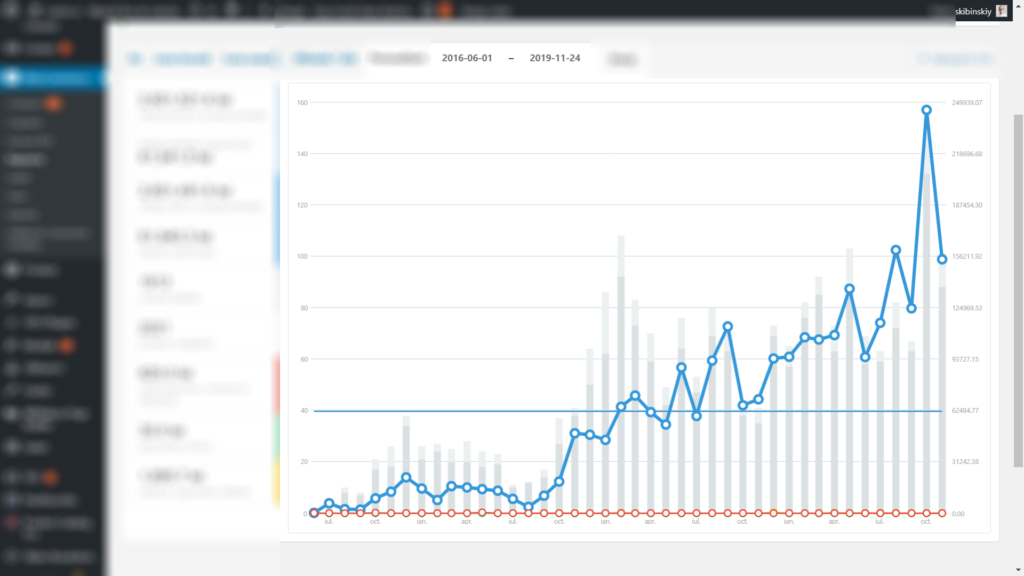
In the image above you may see that advertising efforts in the first few months fluctuate. Why? Marketing to high-end consumers is the same as getting in shape. You may see consistent results after advertising every day for a few months. In our case, it was 1 year and 4 months, because of a variety of factors, but especially a lack of brand awareness and the right products, products that have a better chance of converting and bring a higher ROAS.
Most of the businesses who try to advertise to high-end consumers give up in the first few months because they don’t see profit from the start. From my point of view, this stems from a lack of patience and understanding of how marketing works. Those who go through hell by accepting low returns on advertising spent at the beginning will see good performance and growth with time.
The second mistake that businesses who advertise to high-end consumers make is that they do not measure their results and KPIs.

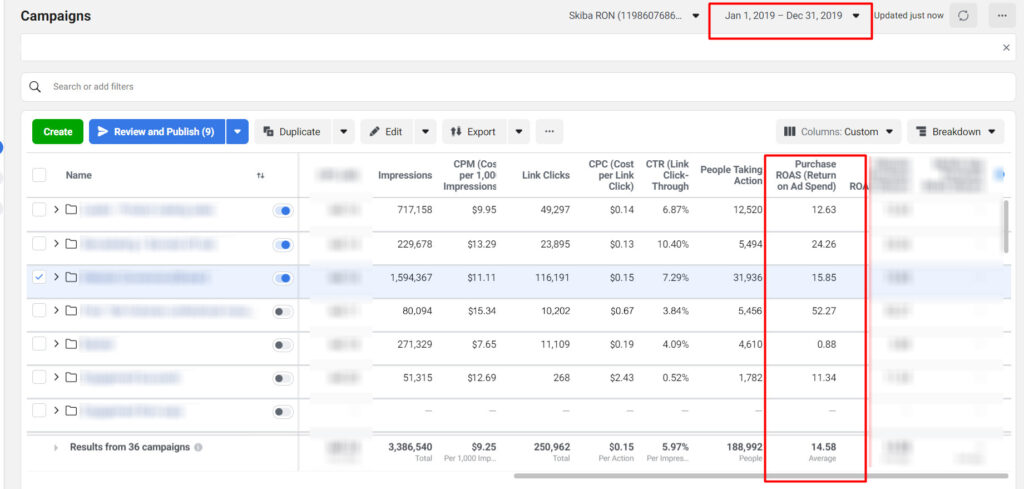
Always measure your KPI so you can improve your marketing campaigns and make them profitable. Every marketing channel gives you the possibility to measure and optimize your results:
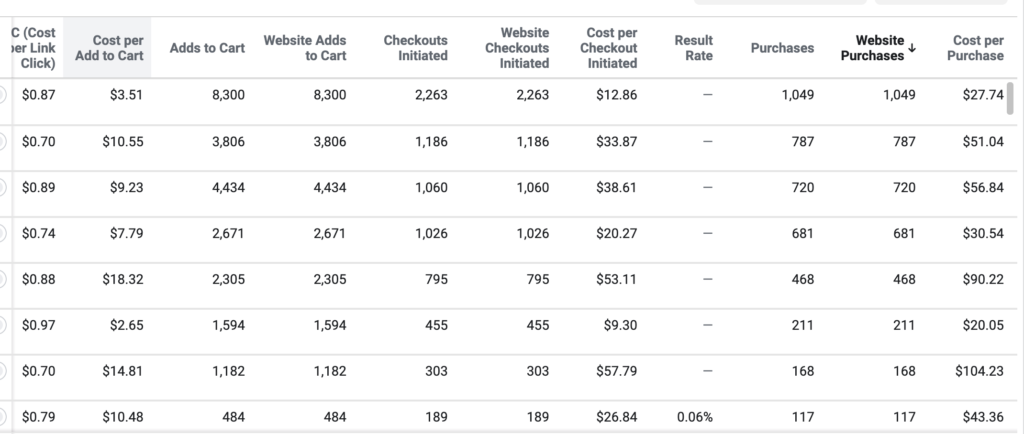
Some examples of stats you have to measure and optimize:
CPC – Cost per Click
You can reduce your customer acquisition cost by optimizing cost per click. Usually advertising and eye-catching creative will help. The more attention your products get, the cheaper your cost per click will be.
ATC – Cost per Add to Cart
A very important sign, if the product doesn’t get a reduced ATC after spending a significant amount of money, just switch to another product and test. Usually, from 100 products only 20% are going to be profitable, but that depends on many factors, of course.
IC – Initiate Checkout Cost
Initiate checkout cost is another step after ATC, and if your products get reduced ATC and Initiate checkout at the same time, it means that you are heading in the right direction.
CPA – Cost Per Action or Cost per Purchase
To optimize your cost per purchase, you must test different products, audiences and creatives. It takes a lot of time and money, but worth every penny in the end.
CR- Conversion Rate
Conversion rate starts from your advertising and finishes with your checkout. In many cases, you can improve your conversion rate and double your revenue with the same marketing budget. That’s why Conversion Rate Optimization is important!
ROAS – Return on Advertising Spent
Return on advertising spent is the penultimate statistic you have to care about. The more it gets the more marketing budget you can allocate.
LTCV – Lifetime customer value
If the ROAS is not positive in the beginning, think about LTCV. For example, if your product costs 10,000 with a profit margin of 4,000, you spent the same amount (4k) to acquire a customer. It means that you are at the break-even point. However, you know that this customer is going to buy from you again in the future which will make your marketing campaign profitable in the long run.
Always think about LTCV when investing in marketing! There is no problem being at break-even point at the beginning of your marketing journey if you know that your LTCV is high.
Another mistake is not having a marketing structure/funnel. Do you have a marketing structure that covers all the steps below?
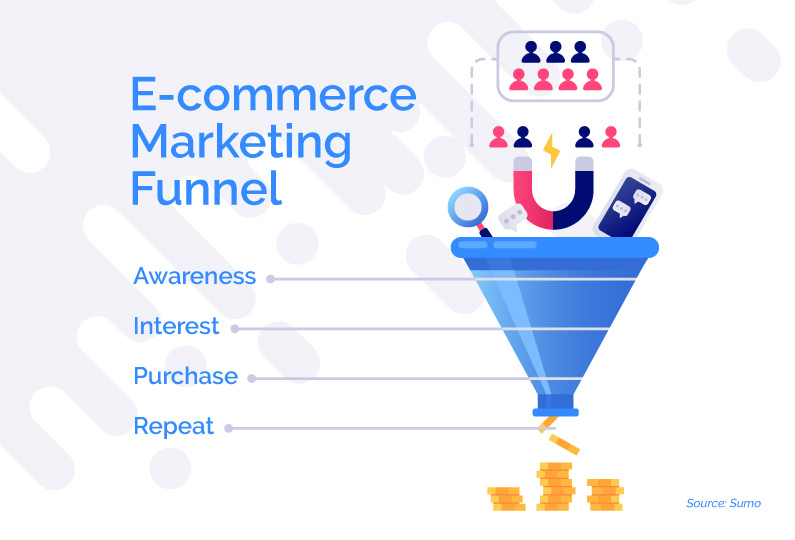
Over 60% of sales in high-end or luxury products come from Remarketing, which plays a crucial role in selling to high-end consumers.
Now, let’s talk about omnichannel marketing strategies for luxury brands….
Marketing to high-end consumers using Google Shopping

You can sell almost any product through Google Shopping ads. Many companies are shifting their marketing budget to Google Shopping campaigns. What are you waiting for?
Marketing to high-end consumers using Content Marketing

Analyze what your target audience searched on Google and start working on a blog or YouTube Channel and you will see a significant increase in sales and website traffic.
Marketing to high-end consumers using LinkedIn
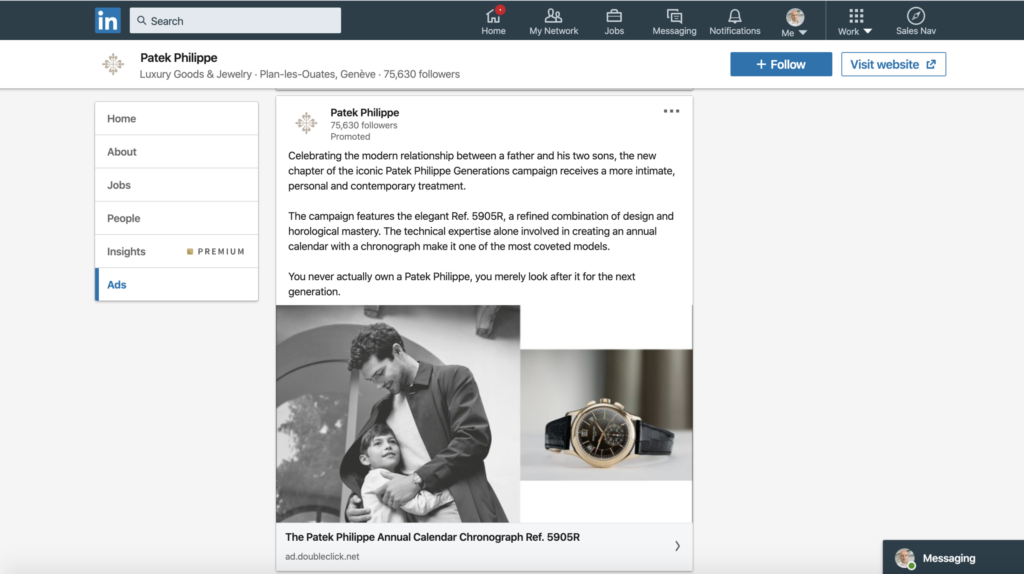
The LinkedIn network is full of high-end individuals you can target precisely. As you can see, other brands are doing it. In the image is an example of Patek Phillip’s advertising campaign on LinkedIn.
Marketing to high-end consumers using Facebook and Instagram

Facebook and Instagram have Conversion Oriented Marketing Campaigns where their algorithm delivers products to people with a higher income. Just let the algorithm do its job 😉

Marketing to high-end consumers using YouTube
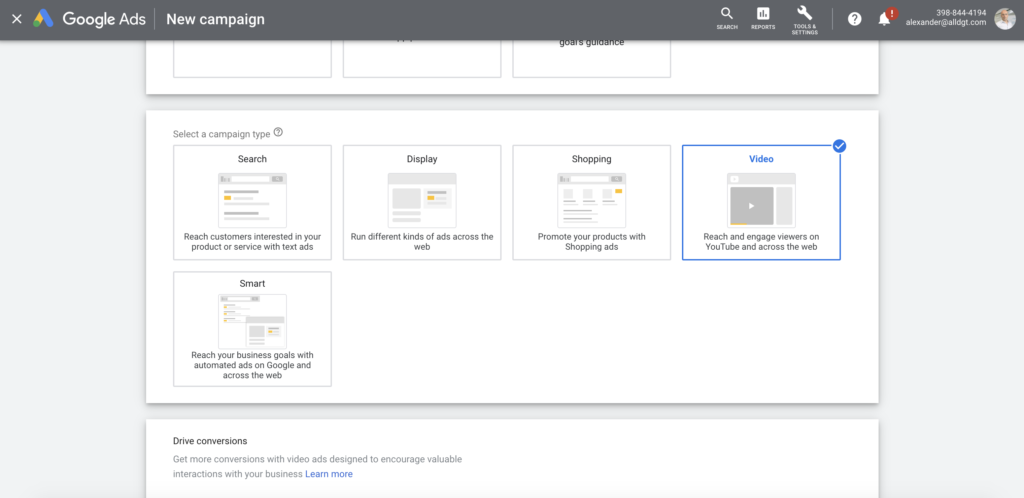
Using YouTube video ads, you can advertise to the people who were searching for specific products or brands on Google. It’s called custom audience which makes it easy to target interested customers.
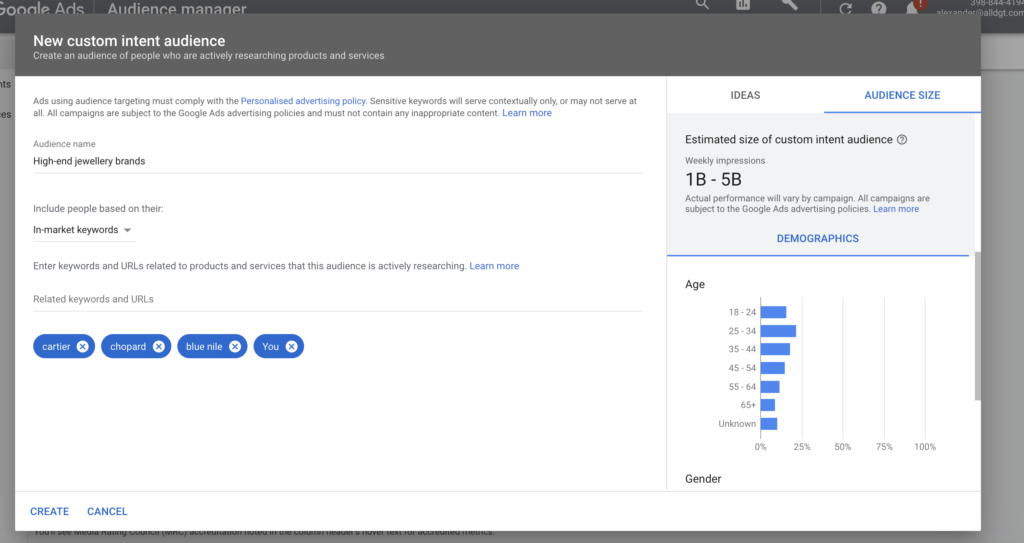
Marketing to high-end consumers using Google Display Campaigns
Google Display Campaigns allow you to place your marketing campaign on almost every website. In that way, for example, you can show your ads on Yahoo, or New York Times etc. Here is an example on the right:

Marketing to high-end consumers using Pinterest
Pinterest is the cheapest way to advertise, don’t wait. Get on it and drive paid traffic to your website. You will see sales and revenue grow.

Marketing to high-end consumers via Email Marketing
It’s been proven that email marketing still works, in spite of the claims that email marketing is dead. That’s not true. Please read my case study: https://alldgt.com/jewelry-email-marketing/
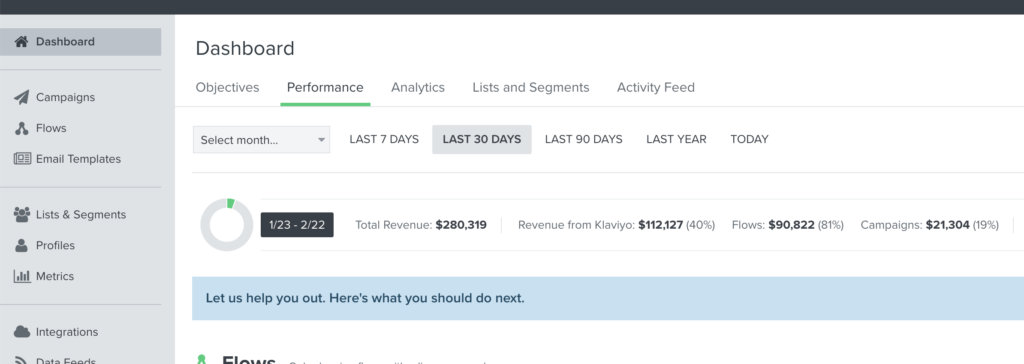
Other channels to target high-end consumers:
Content Marketing, SEO, Amazon, Market Places distribution, Influence marketing and Affiliate marketing. Those also work.
In conclusion:
Marketing to high-end consumers sometimes requires a plan of attack that allows you to be consistent with your messaging. In order to get consistency, you must use multichannel marketing by combining and synching at least a few of the marketing channels from the list above at once.





Leave a Reply
You must be logged in to post a comment.